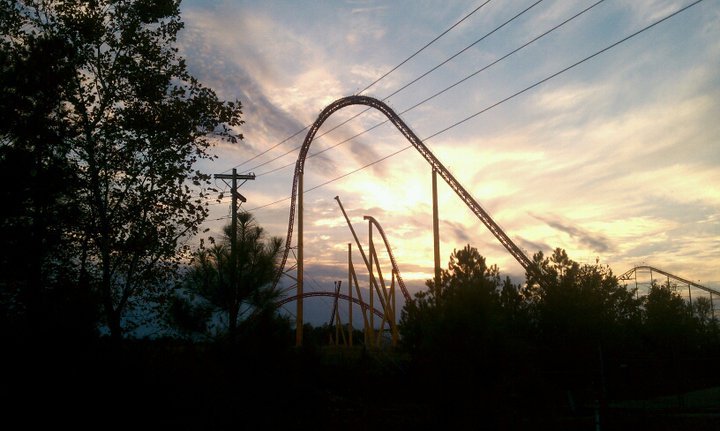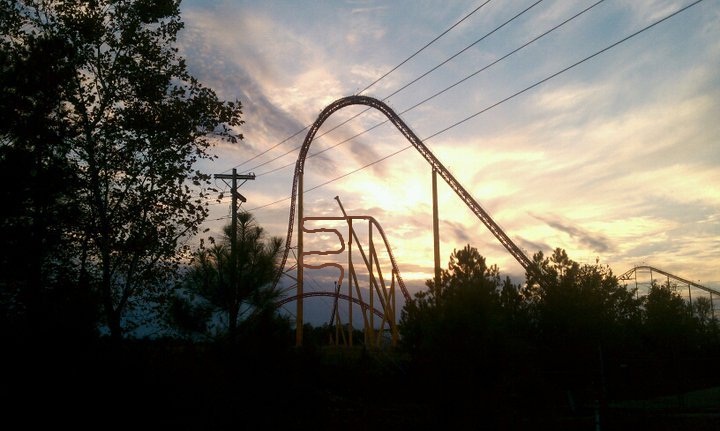Originally posted by dcs221
I don't think that near 100mph figure is physically possible. Someone did the math, and the highest speed without any kind of losses is 95 or so. I also think 79.5 was not at all a typo...with the trims it paced over the 150' hill at around the same speed as SROS SFA does over its first hill of similar height. SROS is listed at like 75, and it has less track before the hill on which to lose speed, so with the similar pacing over the top, one can assume they hit near the same speed.
Here is the math using basic physics. We'll assume zero friction and zero air resistance. Equation used is (final velocity)^2 = (initial velocity)^2 + 2(a)([delta]y). We only need to calculate for the up-down direction where I will label it the y axis. I assume up is positive and down is negative.
[delta]y = 300ft = 91.46m
Initial velocity (in the y direction) = 0
Final velocity (in the y direction) = ?
a (acceleration) = -9.81m/s^2
Plug n' chug those numbers, and your final velocity is 42.36m/s, or 94.77mph. Obviously, the train has an initial speed in the horizontal direction, but it minimally adds to the final speed.





